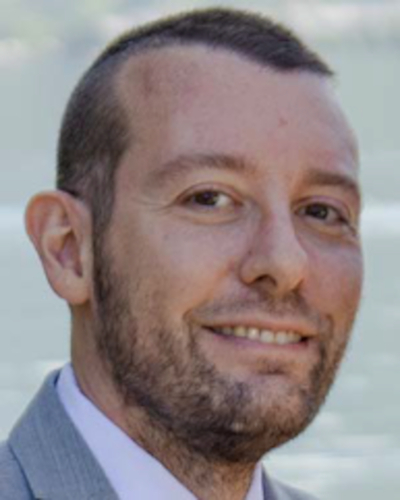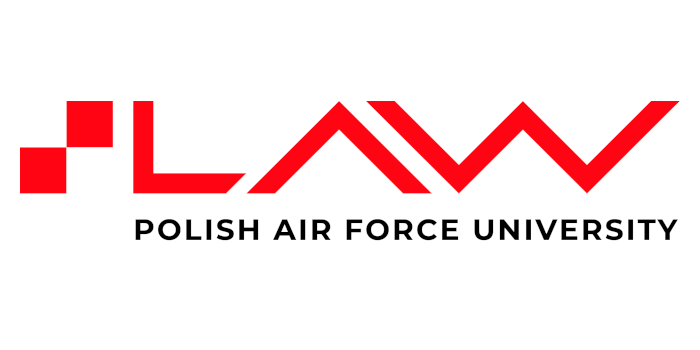SPECIAL TRACK #1
Concepts and Technologies for Next-generation Integrated Terrestrial–Non-Terrestrial Networks (CONNECT)
ORGANIZED BY
Claudio Sacchi
University of Trento, Italy
Alessandro Guidotti
CNIT Research Unit of Bologna, Italy
MOTIVATIONS
6G standards target the global ubiquitous connectivity as an imperative objective. Terrestrial networks, although characterized by a very large diffusion everywhere, cannot fulfill such an ambitious target due to their intrinsic local nature. Moreover, as pointed out by the main organization for international cooperations (United Nations and other ones), the digital divide is an emergency that must by faced in the short term, because the limited number of bit/sec/caputs available in Third World countries represents a serious impairment to the economic and social development.
Together with these considerations, the recent Covid-19 pandemic outbreak revealed the necessity of increasing coverage and capacity of global network infrastructures, so that a resilient connectivity is available everywhere at any time to keep the World connected also in the unpleasant case of lockdown.
In such a framework, non-terrestrial networks (NTNs) play a central role. Modern NTNs configure a Space ecosystem, where various communication payloads, orbiting at various altitudes, cooperate in synergy to support terrestrial networks as a pillar providing resilient and ubiquitous connectivity with a low cost of deployment and exercise. NTNs are hierarchical structures where highest-orbit nodes provide the widest coverage, while lowest-orbit nodes provide the highest capacity and the lowest latency. The sky interconnection of different nodes (particularly, between satellites) configures a kind of “global Space mesh” that can work as “backbone in the sky”, complementing and even replacing terrestrial fiber-based backbones.
It is evident that the challenges to be faced by R&D are big and multifaceted. Old “broadcasting-based” paradigms of NTNs should be reconsidered to pave the way to an integrated ecosystem capable at seamlessly integrating with the terrestrial communication ecosystem. This last is the key objective of the project ITA-NTN (Integrated Terrestrial-Non-Terrestrial Networks), funded by EU in the framework of PNRM RESTART Workprgramme. Such a project joined in a cooperative cluster the main Italian academic institutions, research centers and industrial actors working in the field of Space communication and networking to actively contribute to the development and standardization of the future NTNs going beyond the framework of 6G.
The track is supported by ITA-NTN in the framework of the project dissemination activities. Moreover, the IEEE AESS technical panel on Glue Technologies for Space Systems offers its endorsement to the track organization.
SCOPE AND TOPICS
CONNECT track aims at collecting scientific contributions dealing with the latest developments of NTNs. The contributions will be in form of oral presentations, poster presentations (reserved to students and young researchers) and demos. A non-exhaustive list of the track topics is given as follows:
- Advanced waveform design for NTNs.
- SDR, SDN and NVF for full-software NTN deployment.
- Reconfigurable metasurfaces for NTNs.
- AI and machine learning for intelligent NTNs.
- Interconnected satellite constellations.
- Routing techniques for 3D multi-layer networks.
- Seamless integration of terrestrial and non-terrestrial networks.
- 3D NTN networks in the framework of ongoing and future standards (5G and 6G).
- Architectures and technologies for 5G/6G verticals via NTN.
- Sustainability-by-design for future NTNs.
- Navigation-communication integrated systems and applications for NTNs.
- Information security in NTNs.
- Quantum communications for NTNs.
- NTNs for digital-divide mitigation.
- NTNs for emergency recovery in extreme environments.
- True “non-terrestrial” networks operating in extraterrestrial contexts.
TRACK FORMAT
The special track will be organized in intensive modality, indicatively in a single conference day. It will consist of:
- An introducing keynote speech held by a top-level speaker coming from academy or industry (morning: 9.00 a.m. – 10.30 a.m.)
- ITA-NTN project oral session, hosting suggested contributions coming from ITA-NTN research units, including the cascade calls (morning: 11.00 a.m. – 1.00 p.m.)
- Poster and demo session for young researchers, open to all (afternoon: 2.30 p.m. – 4.30 p.m.) The contributions of this session will be peer-reviewed.
- Open oral session, hosting peer-reviewed contributions (afternoon: 5.00 p.m. – 7.00 p.m.).
TRACK AWARD
Best paper awards for:
- The best paper presented by a young researcher (Master and/or PhD student).
- The best paper presented by a woman researcher (find support from IEEE WIE).
ACKNOWLEDGMENTS
The event is supported by the European Union under the Italian National Recovery and Resilience Plan (NRRP) of NextGenerationEU partnership on “Telecommunications of the Future” (PE00000001–program “RESTART”). The research activities that will be presented in this event fall within the field of interest of the IEEE AESS technical panel on Glue Technologies for Space Systems.
ABOUT THE ORGANIZERS
Claudio Sacchi was born in Genoa (Italy) in 1965. He received the “Laurea” degree in Electronic Engineering and the Ph.D. in Space Science and Engineering from the University of Genoa, Italy, in 1992 and 2003, respectively. From 1996 to 2002, he was a Research Cooperator with the Department of Biophysical and Electronic Engineering (DIBE), University of Genoa, and with the National Italian Consortium in Telecommunications (CNIT), managing project activities in the field of multimedia surveillance systems and satellite communications. In August 2002, he joined the Department of Information Engineering and Computer Science (DISI), University of Trento, Italy, as an Assistant Professor. He was promoted to Associate Professor in December 2020. He has authored and coauthored more than 140 papers published in international journals and conferences. He is Senior Member IEEE and a member of the IEEE ComSoc, IEEE BTS, IEEE VT, and IEEE AESS. Since 2019, he has been coordinating and chairing the IEEE AESS technical panel: “Glue Technologies for Space Systems” that was awarded by AESS as “Outstanding Panel of the Year” in 2020 and 2021. Since January 1st, 2023, Claudio Sacchi has got double affiliation with UNM as Research Professor. His main research interests are related to emerging satellite and aerospace communications and broadband mobile communications in 5G and 6G systems, software defined radios, emergency communications, mm-wave transmission in terrestrial and satellite applications.
Alessandro Guidotti received the master’s degree (magna cum laude) in telecommunications engineering and the Ph.D. degree in electronics, computer science, and telecommunications from the University of Bologna, Bologna, Italy, in 2008 and 2012, respectively. From 2009 to 2011, he was a Representative for the Italian Administration within CEPT SE43. During 2011 and 2012, he was a Visiting Researcher with SUPELEC, Paris, France. From 2014 to 2021, he was a Research Associate with the Department of Electrical, Electronic, and Information Engineering “Guglielmo Marconi,” University of Bologna. From 2021, he has been a Researcher with the Consorzio Interuniversitario delle Telecomunicazioni, located at the Research Unit of the University of Bologna. He is active in national and international research projects on wireless and satellite communication systems in several European Space Agency and European Commission funded projects. His research interests include wireless communication systems, spectrum management, cognitive radios, interference management, 5G, and machine learning. Dr. Guidotti is currently a Member of the Editorial Board as a Review Editor of the Aerial and Space Networks journal for Frontiers in Space Technologies. Since 2018, he has been a TPC and Publication Co-Chair with the ASMS/SPSC Conference. He is a Workshop Co-Chair of the 2023 IEEE International Conference on Wireless for Space and Extreme Environments and a Member of IEEE Aerospace and Electronic Systems Society “Glue Technologies for Space Systems” Technical Panel.



































